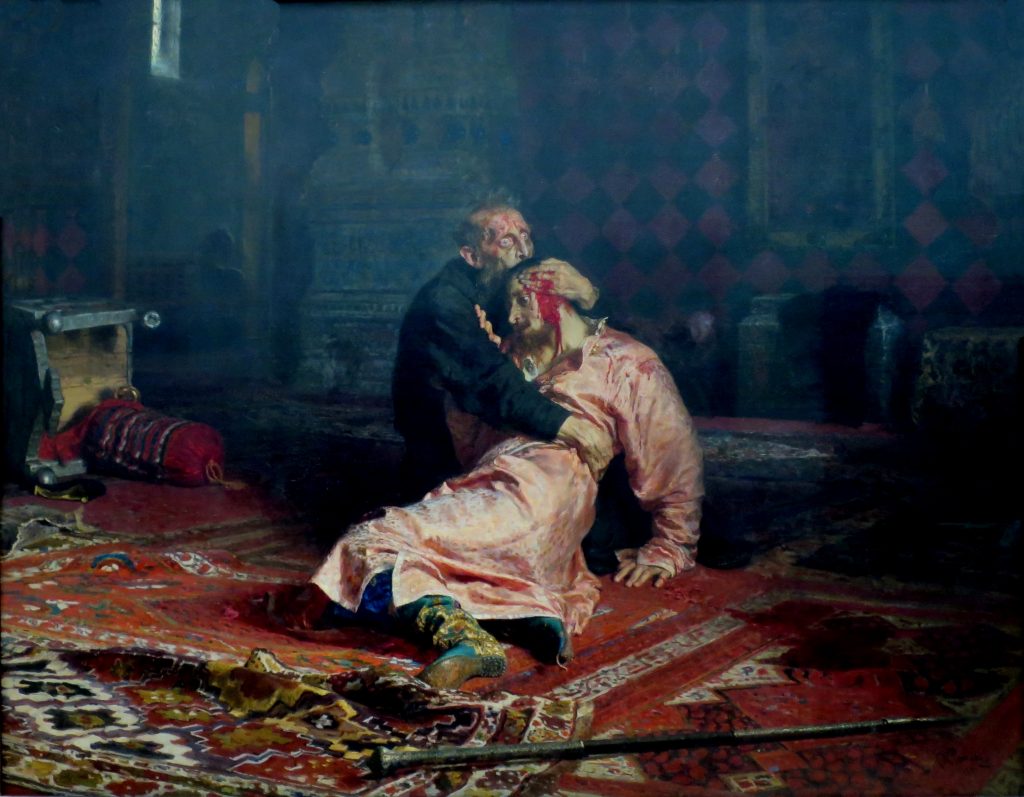Artwork: Ivan the Terrible Killing His Son
Artist: Ilya Repin
About the Artwork:
March 13th, 1881. The assassination of Emperor Alexander II brings chaos to Russia. The liberties and reform he had worked to create came tearing apart at the seams.
Realist artist Ilya Repin described the scene in Russia over the weeks, months, and years that followed: “My emotions were overwhelmed by the horrors of contemporary life. … Terrible scenes were in everybody’s mind, but no one dared paint them … It was natural to look for a way out of this painful and tragic situation through history”.
But he did not look away. Instead, Repin chose to reflect on what had happened by looking back into the bloody and haunting history of his beloved country.
One particular event came to mind.
Exactly 300 years prior to the murder of Alexander II, Tsar Ivan IV Vasilyevich – known in English as Ivan the Terrible due to his vicious instability – murdered his son.
It is said to have started when Ivan physically assaulted his pregnant daughter-in-law over her choice of clothing. His son (also named Ivan, and just as sadistic) ran to the defence of his wife, but it was too late. She would suffer a miscarriage soon after.
Ivan’s son confronted him, and the argument soon expanded as the son began to criticise his father’s political decisions. Ivan got so angry that he struck out with his scepter.
The younger Ivan fell, slipping into darkness as blood gushed from his head. His father dropped to his knees, cradled his son, and cried “May I be damned! I’ve killed my son! I’ve killed my son!”
It is this moment that Repin captures with some of the most disturbing and potent artistry ever put to canvas. Ivan the Terrible’s eyes, filled with regret, lament the senseless violence. It could be surmised that at this very moment a complete understanding of the ruthless actions he has undertaken in his 34 years of reign has dawned.
The painting was heavily censored throughout Russia, and all papers nationwide were banned from writing positive remarks about it.
Two decades later, when the Russian Revolution broke out, Repin would come to be seen as the benchmark for artistic brilliance in the country, even though the revolt represented everything that he had been speaking out against by depicting such a controversial and affecting scene.

